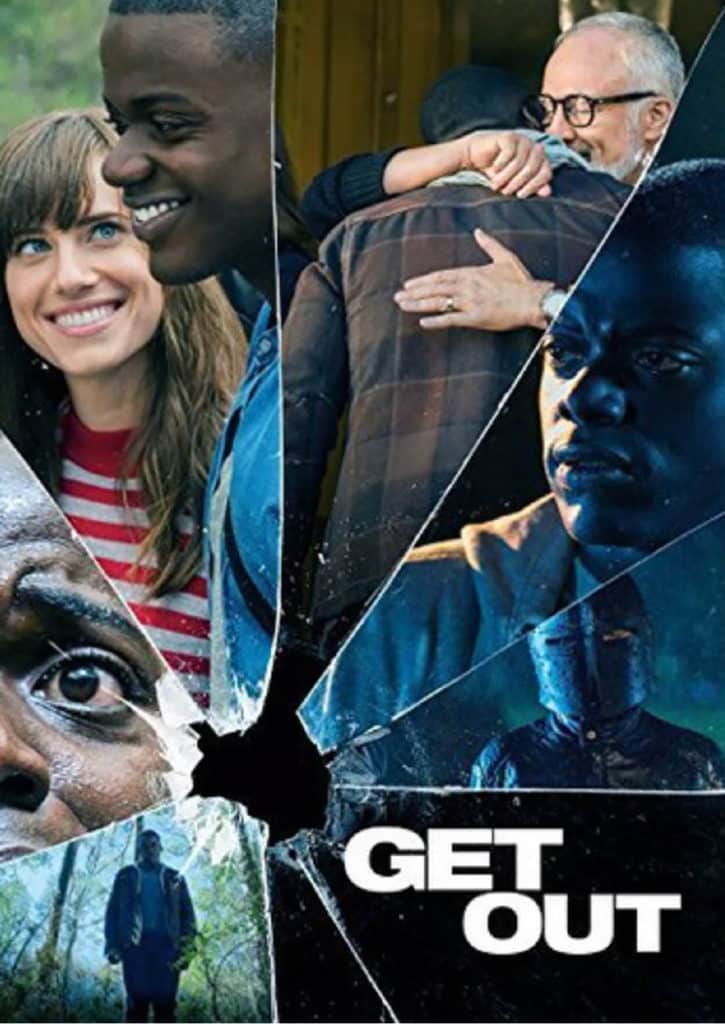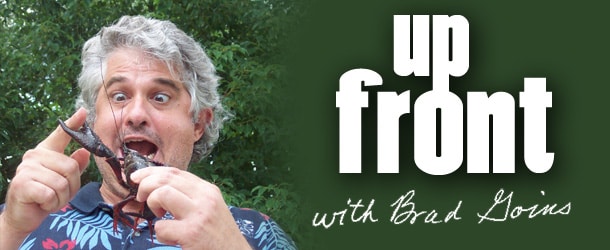The most innovative event to hit the Lake Area in many a long day will take place on February 3. Its objective is to markedly improve the quality of life on one Sulphur street — South Huntington — for one day. The event will give participants an idea of what the local culture might be like if it weren’t all about one individual driving one vehicle all over creation all the time.
The “Better Block” demonstration will bring “bicycle and pedestrian infrastructure” to Huntington street for a day. There will be pop-up gardens and farmers markets as well as other features that give folks a chance to slow down and markedly improve their quality of life.
Better Block volunteers and members of organizations supporting the effort will be going up and down South Huntington from 10 am to 5 pm. There will even be organized entertainment: a Mardi Gras bike parade that starts at 1:45 pm (as a prelude to the Sulphur Mardi Gras parade).
“It’s a way to give people a hands-on example of what a ‘Complete Street’ would look like,” said John O’Donnell of Healthier Southwest Louisiana. “A Better Block is an incredibly powerful advocacy tool when it comes to creating a healthier built environment, and we’re very excited about it.”
For more info, contact Amanda White at awhite@allianceswla.org or 433-3632.
Painting Paint

Lake Charles will get to see this new form of art up close and personal when “Freeing the Gesture,” an exhibit of paintings by Donald Martiny, comes to the Historic City Hall on Jan. 12. If you want to participate in the opening reception, that will take place 5:30-8 pm on the 12th.
Running at the same time on the first floor of the venue will be “The Personal Is Political: Portraits of Louisiana Second-Wave Feminists.” If you’re interested in Second-Wave Feminism, or just want to know what it is, take a look-see. Each person photographed was interviewed by McNeese professor Janet Allured for her book Remapping Second-Wave Feminism; each photo was taken by MSU professor Carrie Chrisco.
Both shows will run through March 3.
The Historic City Hall, at 1001 Ryan St. (Ryan and Kirby), is open M-F 10 am-5 pm and Sat. 10 am-2 pm.
Year-End Round-up
Only a madman would try to put together a coherent round-up of national events in 2017. Instead, I’ll just remind readers of what the Chinese say to their enemies: “May you live in interesting times.”

The black lead — young man Chris, played by Daniel Kaluuya — is afraid that when he visits his rich white girlfriend’s parents, they’ll give him a lot of grief. She assures him her parents are hip enough not to do that. And in fact, Chris is surprised to learn the rich white folks in his girlfriend’s neighborhood actually seem to admire black people. But, as they say in the movie ads, “nothing is what it seems to be.” Things start to get really scary when a black worker in the area whispers in Chris’ ear “Get out!”
Peele said the idea for his movie came from the notion that people who watch poorly made horror films often yell at the characters to “get out” of the dangerous place. Peele said that if the characters in the movie were black, they would get out at the first sign of really serious danger — in other words, they wouldn’t have to be yelled at. Now, whether Chris manages to get out in the movie Get Out, well … you’ll have to see the film to know that.
As for books, I reviewed every Louisiana book I was sent in 2017 in Lagniappe. Of those, the one I’d most recommend is Lost Lake Charles by Adley Cormier. It’s a short, fun read and will give anyone a strong sense of the key developments in L.C. history.
I didn’t read any national books released in 2017. But I did make my way through a number published in the new millennium. Here are four I especially recommend for a general audience.
Mao: The Unknown Story by Judy Chang, 2006, 801 pages. In this controversial biography, Chang demolishes any notions of Mao as the godlike revolutionary thinker. She portrays Mao as a spoiled, privileged sadist whose one great talent was in using Lenin’s technique of widespread, violent terrorism to force the entire country of China to buckle under. She shows Mao as having no depth of feeling for his many wives and children, whom he abandons or simply fails to recognize. With 70 million deaths to his credit, she says, Mao is history’s most murderous dictator. It’s not a fun story, but it does keep the reader fascinated.
102 Minutes by Jim Dwyer and Kevin Flynn, 2006, 384 pages. The 102 minutes of the title are the time that passes between the moment the first tower of the World Trade Center is hit by the jet and the moment of its collapse. (The second tower is hit by its jet and collapses during this interval.) What most people will find engrossing about this book is the hundreds of anecdotes about what is done and thought by a large number of the 14,000 people who were in the towers during the 102 minutes. The two New York Times reporters who authored the book also look in great detail at such topics as the obsolete or ill-planned architectural and safety features of the towers; the grossly inefficient communications system of the N.Y. Fire Dept.; the extreme danger that was in store for those who tried to leave the towers by the main exits; and the tornado-speed winds created by the collapse of the second tower. This grand work of journalism is a page-turner.
HP Lovecraft: The Mysterious Man Behind The Darkness by Charlotte Montague, 2015, 192 pages. At first, I thought this was simply a picture book or coffee table book. But the text, as short as it is, covers Lovecraft’s life in remarkable detail. In Lovecraft’s letters and journals, Montague finds many eloquent and moving statements of his practical, realistic pessimism. Although I skipped Montague’s summaries of Lovecraft’s major works, these synopses will probably make interesting reading for the Lovecraft novice and give him or her ideas about where to start with Lovecraft. The book is highly recommended for both Lovecraft aficionados and those who’ve never heard of him.
Mrs. Wakeman Vs. The Antichrist: And Other Strange-But-True Tales from American History by Robert Damon Schneck, 2014, 320 pages. The content of this quick, fun read in history lite is evident from the title. I’d say the story that’s oddest is the one mentioned in the book’s title. In the 19th century, Mrs. Wakeman was a woman who believed that each of her many husbands was the Antichrist. Natch, she built up a big flock of true believers. It wasn’t the Apocalypse, but the involvement of the police, that eventually broke up this freaky, dangerous crew. I think an author who’s better at writing up strange-but-true stories is Welshman Jon Ronson, who’s described himself as a “gonzo journalist.” His volumes include Them: Adventures With Extremists (2001) and The Men Who Stare At Goats (2009). Ronson is one of those rare people who has the guts to infiltrate any group. As proof, if you read Them, you’ll learn that the Bilderberg Group isn’t a conspiracy theory; it’s absolutely real, and Ronson will tell you who some of its members are. Do the initials B.C. mean anything to you? Now, whether the group runs the world … that you get to decide on your own. But read Ronson before you do.
If you’re looking for reads for the new year, those titles should keep you satisfied for at least the first couple of months. Consider the information contained in these magnificent little reviews my New Year’s gift to you.
The Good Stuff’s In The Back
I was pleased as punch when someone gave me a recent copy of Popular Science. I was delighted to know that this was one of the magazines from my childhood that’s still publishing.
I was even more delighted to discover that the back pages of the magazine was full of those tiny, el cheapo ads people of my age used to see in the back of men’s magazines and comic books.
One ad promotes an “Electronic Wart Remover.” Another exposes “H20 Scams,” giving consumers the opportunity to “Learn the truth about distilled, mineral, spring, filtered, bottle, well, tap, alkalized, reverse osmosis & more … “ — that is, different types of water.
And then there’s the ad for “the first massage chair,” which, the reader is told, was designed “by Yale University & Stanford University chiropractors.” Well, that’s really not a surprise, given that the faculty of both Yale and Stanford is loaded with chiropractors. In fact, the two schools rank first and second among U.S. university departments of chiropractic.
The miracle chair provides “INSTANT Pain Relief” and “THE GIFT OF HEALING.” It’s been “FEATURED ON: FOX NEWS.” But the best feature of all — it’s cheap, son! Only $89 a month. And to think that 50 years ago, most of the stuff in the back cost $1.99. Total.
There’s nothing to indicate an ad offering “all you need to know about the Bible for salvation” is insincere. The ad offers readers a free CD and provides a web site (aboutsalvation.blogspot.com) where consumers can go to check out the source.
Another ad is a bit less convincing. This one really must be quoted at length:
“SOON Church and Government Uniting will suppress ‘RELIGIOUS LIBERTY’ enforcing a ‘NATIONAL SUNDAY LAW,’ leading to the ‘MARK’ OF THE BEAST. Be informed / Be forewarned! Need mailing address for FREE materials.”
Here’s the short list of problems:
1. Not one of the 11 words that are in all capitals should be. The only thing that should ever be entirely in capitals is an acronym (NASA, MTV).
2. Most likely, none of the words or phrases that are in quotation marks should be. For instance, the author should only put quotation marks around the phrase religious liberty if he suspects that religious liberty isn’t a real issue. This is especially problematic with the inclusion of “MARK” in quotation marks. These quotation marks indicate that the author thinks that the Beast exists but its mark does not.
3. “Be informed” should be followed by a period, not a slash.
4. The meaning of the sentence “Need mailing address for FREE materials” is unclear. Who is in need of the address? Is it the reader? The person who placed the ad? Your guess is as good as mine.
Does the fact that this writer mangles the English language mean that his “prophecy” — notice I put “prophecy” in quotation marks — is invalid? Yeah, I think so. If you’re going to stand up and proudly assert that you’re the one dude on the planet who’s smart enough to predict the exact nature of the future of the U.S.A., you should at least be smart enough to get a C in English 101.
I can’t give you the web site for the source of the materials for this ad because that’s not provided. Anyone who wants the materials must contact the source of the ad, either through the mailing address, an email address or a 1 888 phone number. In short, if you want to know anything about these materials, you have to directly contact the person who’s distributing them. And who is that person? Well, the mailing address begins simply with the acronym TBSM. Could that stand for “To Be a Sucker, Mail”?
They say the good stuff is always in the back. But the back is best considered a place of diversion, not enlightenment.
The News
“Olive Garden is still a hit with pasta lovers” — headline on CNN, Dec. 20.















Comments are closed.